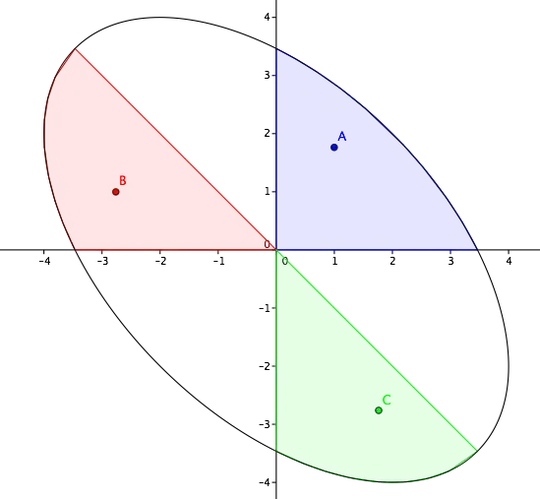I'm looking at this problem:
Let N be the number of ordered pairs (x,*y) of integers such that $x^2+xy+y^2\le 2012$. Prove that N is not divisible by 3.
from https://www.imomath.com/index.php?options=585 Problem 3
The answer shows that all integer points matching this inequality can be divided into 3 parts as {(x,y),(-x-y,x),(y,-x-y)} except (0,0).
The conclusion seems also correct for all real points inside the ellipse $x^2+xy+y^2=A$. So the ellipse is divided into 3 parts except the center point.
My question is: what are the areas of these 3 parts? Is it related to measure theory (or something like Banach–Tarski paradox)?
